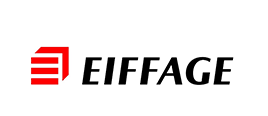In a pre-BIM world and time, the first challenge to improve collaborative practices in the AEC field has been to promote the interoperability of information created by software, through data and protocols standardized.
Created by a consortium of American companies in the 1990s, the International Alliance for Interoperability (IAI), renamed buildingSmart in 2005, developed and maintained the standard, which became the Industry Foundation Classes (IFC) standard, recognized by all major publishers.
This international organization has national structures, called chapters, in about 20 countries. In France, it is the interprofessional association Mediaconstruct, renamed buildingSmart France (bSF).
BuildingSmart is responsible for maintaining BIM data exchange standards, but also provides standards for standardized vocabulary/language (IFD) and process definition (IDM) aspects, as shown in the figure below. Finally, to ensure greater flexibility in exchanges, a subset of IFCs can be used (MVDs) to exchange only the most impactful information between actors.

The adoption of BIM therefore began with the adoption of standards by AEC field software publishers. Since its inception, IFCs have evolved from version to version, followed with delay by publishers and project management teams. The following figure shows three main phases of evolution. The first phase, up to IFC 2.0, was little adopted and to date completely abandoned. The second phase has seen 6 years of extension-oriented developments. Finally, a complete review of the entities took place for version 4, allows parametric geometries, is better prepared for future extensive evolutions (roads, bridges, etc.).
In 2018, even if no quantitative data are available, many teams are still using IFC 2x3-TC1, to minimize the risk of incompatibility between different software. In addition, software certification processes for IFC 4 only started in 2017.




























